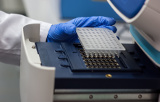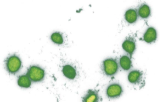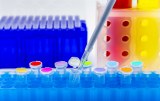Biorbyt
 |
||
Products for advancing your discoveries From antibodies to proteins, biochemicals to ELISA kits, Biorbyt's high quality research products are available for you to enable world class research and contribution to a deeper understanding of life sciences.
A comprehensive catalog of life science research products covering the areas of Neuroscience, Signal transduction, Cell Biology, Cancer Metabolism, Cardiovascular and others
Product range :
Choose from over 100,000 primary antibodies and over 2,000 secondary antibodies. Monoclonals and polyclonals tested in a number of applications - WB, ELISA, IHC, FACS and many more.
Choose from over 7,000 proteins and over 400 active proteins. All of our proteins have been validated for use in ELISAs, WB and IHC-P
We have over 10,000 biochemicals for use in your research.
We have over 2,000 ELISA kits covering many research areas . Each kit comes with a fully detailed protocol and examples of expected results.
Website : https://www.biorbyt.com/
| ||

Detection of cell contamination
Mycoplasma and bacterial contamination is a major concern for research laboratories (e.g. in cell biology) or biopharmaceutical laboratories (production of vaccines, monoclonal antibodies, etc.).
Mycoplasmas are the smallest self-producing microorganisms and can reproduce in extracellular space. Although they are mostly harmless to humans, other host animals and plants, some species can cause disease in humans. In particular, 6 species are a frequent cause of contamination in continuous cell lines and primary cells. Because of their size, mycoplasma are not detectable (e.g. under the microscope) and yet they profoundly alter cell cultures (metabolism, cell growth, pH, viability, membrane transport).
The main source of mycoplasma contamination is other infected cell cultures as well as culture media, reagents (fetal bovine serum, trypsin, etc.) and laboratory personnel.
Mycoplasma contaminations can cost money, time and reputation, compromise research results or impact the safety of biologic therapies. Effective strategies against mycoplasma contaminations are prevention, early detection, removal of infected material, or disposal of mycoplasma.
Early detection of bacteria in cell cultures is the only reasonable solution and the only control measure against a common problem for life science laboratories: bacterial contaminations in cell cultures.
Up to 5% of all cell cultures are contaminated with bacteria but show no visual signs of bacterial contamination, such as turbidity, sudden change in the colour of the medium (phenol red) or microscopic particles. In addition, bacteria may show resistance or lack of sensitivity to standard antibiotics (e.g. penicillin/streptomycin) and have a direct impact on cell metabolism, growth and differentiation.



